Though plagued with production problems, “Army of Darkness” is a wildly entertaining and beloved conclusion to an iconic horror trilogy.
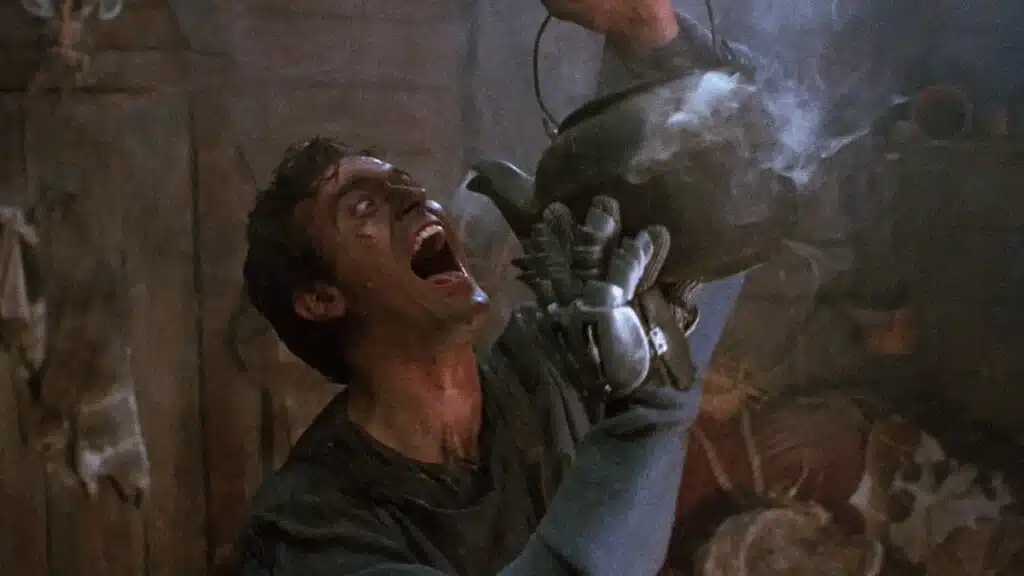
Descendent from two other cult classics, Army of Darkness was the seventh collaboration between director Sam Raimi and Bruce Campbell, who serves as co-producer for the second time during the series (Campbell served as Executive Producer on the first Evil Dead film).
In a story heavily inspired by Mark Twain’s 1889 novel A Connecticut Yankee in King Arthur’s Court (check out this detailed comparison of Twain’s novel and Raimi’s film), Army of Darkness opens with Ash (Campbell) being dropped in the middle ages — along with the trademark Oldsmobile Delta ’88, which has appeared in every Raimi film.
The scene was shot twice because of a mechanical issue. The twenty-five-ton crane failed to lift the car and capsized over a cliff while on location. An eighty-ton crane removed the remnants. This second crane was also used to shoot the second car drop. The final product included a cross-cut between the newer footage and Evil Dead 2 (1987).
For those of you who have ever wondered, the contents in the vehicle’s trunk are all items belonging to Raimi.
They include a Fangoria issue, incorporated as a nod of gratitude toward the publishers for featuring The Evil Dead (1981) in their publication upon its premiere. Another visible item is the April 1991 Dark Horse Presents Fifth Anniversary Special, which included the first installment of Frank Miller’s Sin City.
It isn’t long before Ash is apprehended by Lord Arthur’s men and accused of being an accomplice of Duke Henry, with whom Arthur is at war. Henry is also a prisoner at the time. Ash is dropped down a Deadite pit, where he defeats a demon — a creature dubbed by the cast and crew as Pit Bitch. This results in Ash, Henry, and Henry’s men being released.
A Wise Man enlightens Ash of the Necronomicon Ex-Mortis and its ability to return the anti-hero to his time. Unfortunately, in one of the franchise’s most iconic scenes, Ash forgets the phrase given to him by the mystic, fumbling his way through the last crucial word with a cough.
As some Sci-Fi fans may know, the phrase Klaatu Barada Nikto carries a history behind it.
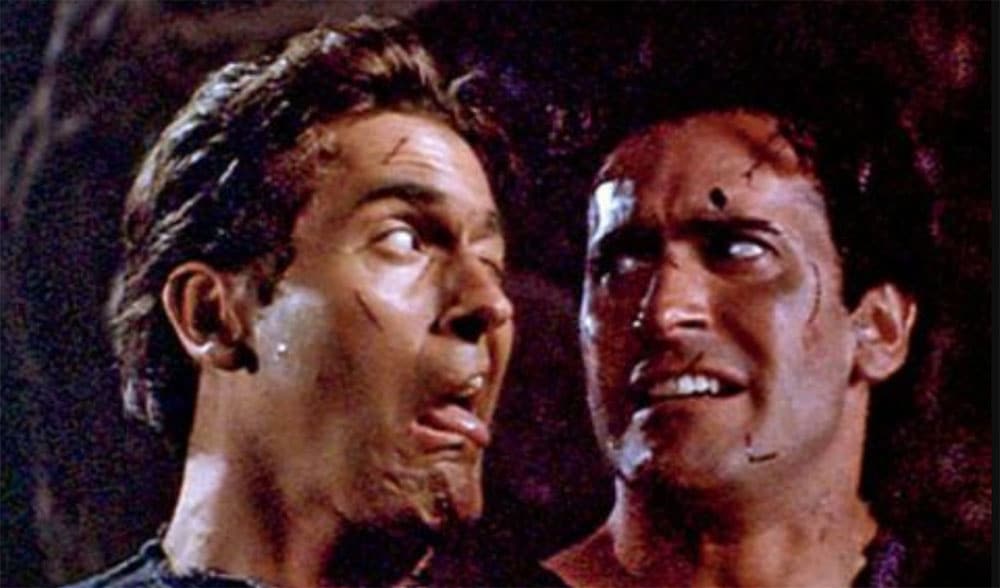
The failsafe originated in the 1951 film The Day The Earth Stood Still. The alien protagonist instructs female heroine Helen to use the utterance to perform a reboot and prevent an inhospitable response on his part.
A previous tribute was paid by Jim Wynorski in his cult classic horror film Chopping Mall (produced by Julie Corman, wife of Roger Corman). Thirty minutes and fifty-five seconds into the film, Mike (John Terlesky) repeats the legendary verbalism when dismissing one of the killbots requesting his id badge.
However, if you listen closely to the hermit’s words in Army, you realize the mid-word in the rhetoric is not “Barada” but “Verata”; Klaatu and Nikto remain.
Still, this sly reference is a delightful easter egg for those who recognize its film history backdrop. And that’s not the only one.
Star Trek fans will recognize the location where Ash learns the infamous incantation, as that scene was shot at the iconic Vasquez Rocks in Agua Dulce, California — the same place the famous “Arena” episode from Star Trek was shot.
Ash’s error in reciting this important phrase allows his dead double, Evil Ash, to rise and resurrect the army of darkness. But creating Evil Ash was no small feat. It took makeup artists three hours to get Campbell ready to shoot these scenes.
Evil Ash itself has its roots in an obscure 1959 sci-fi horror film called The Manster.
Filming for Army began in mid-1991 on the edge of the Mojave Desert and spanned one hundred days.
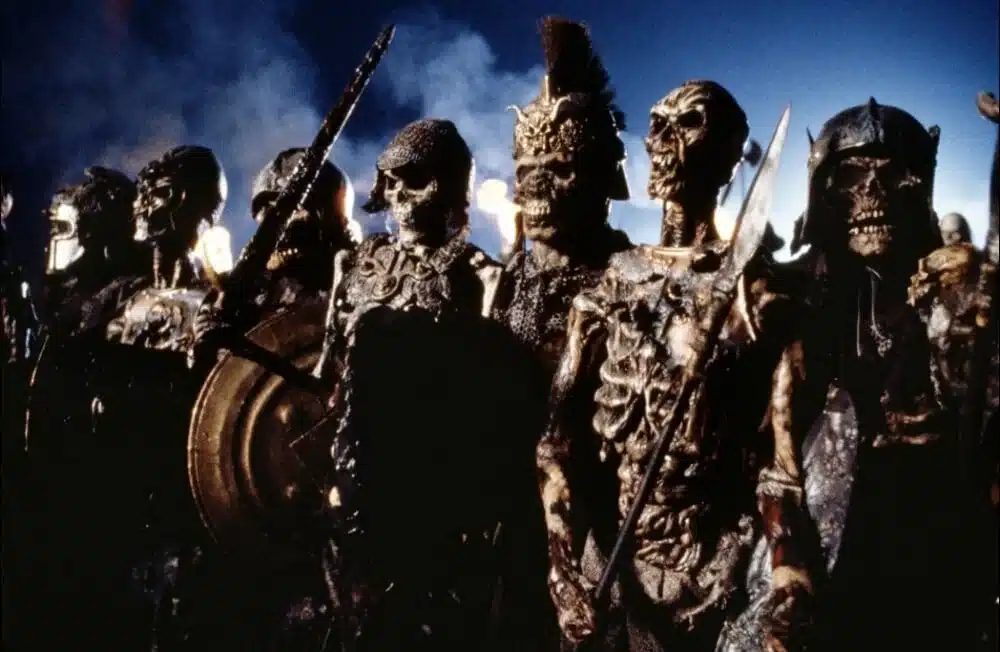
The movie was shot in the Bronson Canyon area of Griffith Park in Los Angeles that served as the Batcave for the 1960s Batman television show.
Filmed during the peak summer months, everyone involved in the film’s production braved extremely hot days and frigid nights. Financial issues arose due to the shortened summer evening hours, and most of the film’s sequences took place at night. After the hour-and-a-half prep time, the filmmakers had only six hours remaining to shoot the scene.
The role of Ash’s medieval love interest Sheila was played by Embeth Davidtz in her first US film role. Davidtz has been candid in describing her difficulties playing the role due to the demands of shooting very physical scenes, mostly at night, in the Mojave desert under heavy prosthetic makeup.
The experience was so grueling, Davidtz almost contemplated giving up acting altogether. Thankfully, this thought was fleeting, and she later went on to appear in the Oscar-winning film Schindler’s List, among other memorable roles.
Raimi wanted to make Army of Darkness immediately following 1987’s Evil Dead II, but he struggled to find funding to finish his trilogy. It wasn’t until the financial success of Raimi’s 1990 film Darkman that Universal Studios finally agreed to foot half of the film’s $12 million budget with executive producer Dino De Laurentiis.
Coincidentally, Danny Elfman, who previously worked with Raimi when scoring Darkman, also wrote the “March of the Dead” theme for Army of Darkness.
In memory of Ray Harryhausen and his celebrated stop-motion animation work, Raimi employed introversion. This is a process of composite photography via front projection using reflected screens set in a perpendicular position so that two projected scenes merge with an acted scene in unison.
Raimi personally storyboarded every single shot in the film. About 25 shots in the final battle are taken from storyboards originally used in the 1948 Victor Fleming film Joan of Arc.
The film premiered at Sitges on October 9, 1992, and finally made its way to U.S. theaters on February 19, 1993.
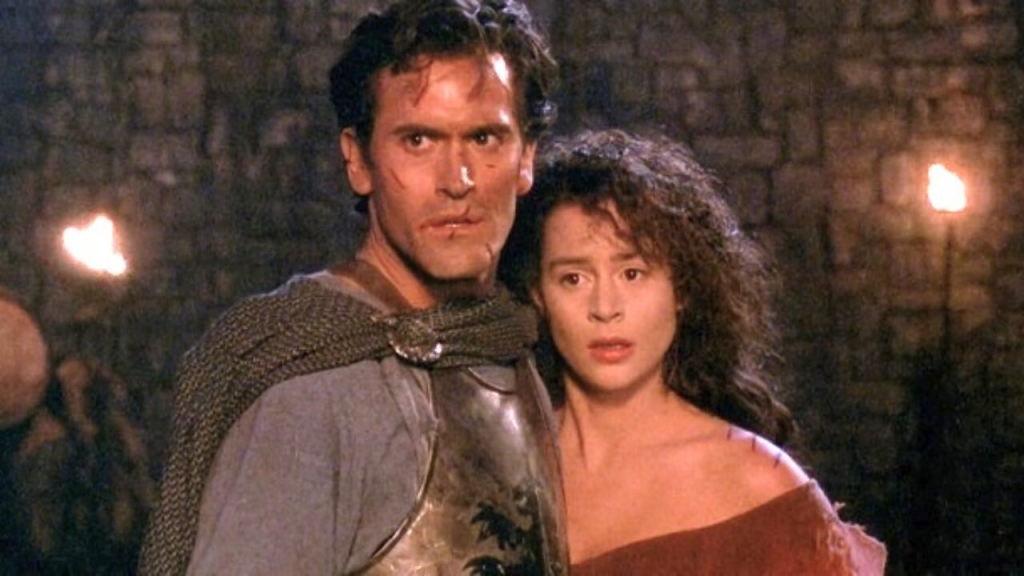
Initially, the film received a controversial NC-17 rating from the MPAA. But it was subsequently given an R rating after the filmmakers pointed out that the gore in the film was really only happening to skeletons.
The film’s title is stylized onscreen as Bruce Campbell vs. Army of Darkness. This was Raimi’s homage to the defunct Hollywood tradition of putting stars’ names in movie titles. But the studio feared the long title would confuse moviegoers, so it was shortened for official purposes to just Army of Darkness. Though, that wasn’t Raimi’s first choice for the shorter title, either. He originally wanted to call it The Medieval Dead.
That wasn’t the only element of the film that changed from Raimi’s original vision.
Because of the film’s considerably higher budget than the previous two films in the franchise, it was subject to far more studio interference. This caused friction between the filmmakers and the studio during post-production. Universal executives took over the editing process and demanded that certain scenes be shot. This included the film’s ending.
The original conclusion of the film featured Ash taking too much potion to get back to the present day and waking up in a future, post-apocalyptic London. Universal thought it was too negative and requested a rework. The original ending can be seen on subsequent director’s cuts and home video versions of the film.
In the studio-mandated reshoot, Ash successfully returns to his own time, goes back to work at S-Mart, keeps battling Deadites, and gets the girl. Though it’s up for debate which conclusion should be seen as the definitive version, the TV series Ash vs. Evil Dead does seem to take its cues from the happier ending.
The post-production clashes resulted in four different cuts of the film being produced.
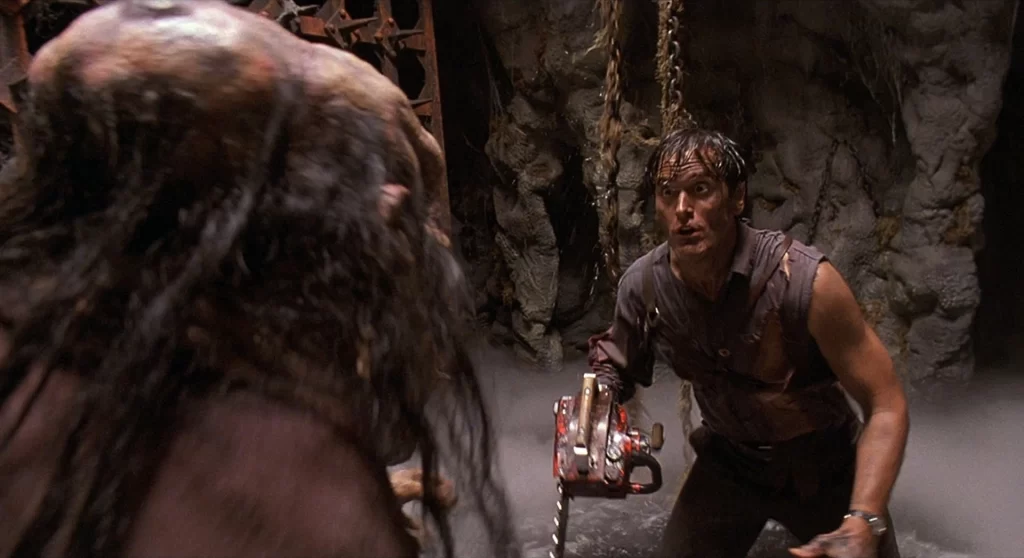
Sam Raimi’s original version was 91 minutes. But the studio insisted on cuts after low audience scores during a test screening. When Raimi came back with an 88-minute cut, the studio still thought it was too long.
Though that version was released outside of the United States, it was an even shorter 81-minute version that was finally released to US audiences in the theater. Later, it was recut entirely for a Sci-Fi Channel TV edit.
The post-production period was so fraught that the film’s original release date was pushed back from the summer of 1992 to February 1993.
That means it took two years to get the film to market from the time shooting began. This upset Campbell, who expressed frustration with the final result and the time it took to bring the film to audiences.
Still, despite the less-than-ideal working conditions, the film was a success.
Initial box office returns were disappointing due to the film’s release in the cinematic dumping ground of February (rather than the planned blockbuster summer release). But it made strong dividends overseas and on home video.
Army eventually grossed $21.5 million worldwide over the picture’s budget and received a generally positive reception.
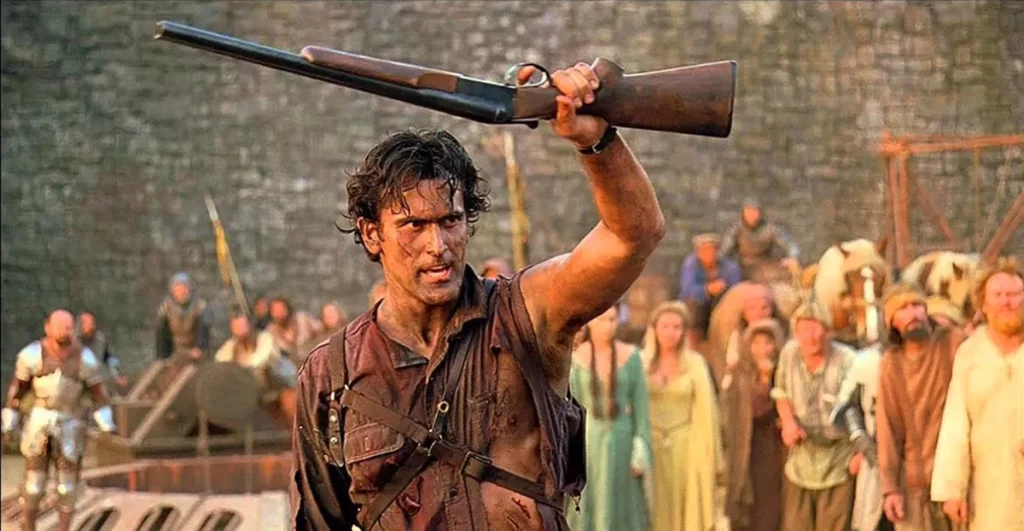
Accolades for the film include five wins for the 1993 Fangoria Chainsaw Awards, including Best Actor for Bruce Campbell, Best Supporting Actress for Bmbeth Davidtz, Best Makeup FX for Tony Gardler Alterian, Best Wide-Release Film, and Best Soundtrack for Joseph LoDuca and Danny Elfman.
Despite the film’s enthusiastic reception and profitability, a sequel never materialized.
Beginning in 2015, Campbell finally reprised his role as Ash in the Ash vs. Evil Dead TV series. And while fans loved the series, Raimi spent years trying to get a film sequel to Army of Darkness off the ground. Sadly, those plans never came to fruition.
Raimi even discussed some ideas he had for the film he envisioned on the commentary track for the first season of Ash vs. Evil Dead.
The series was later canceled after three seasons, with Campbell officially retiring from the role of Ash. Though he has agreed to lend his voice to the upcoming Evil Dead video game, and he admits that, while he has no plans to return to the franchise, his mind could be changed if the perfect project were to come along.
Never say never, Dead fans!


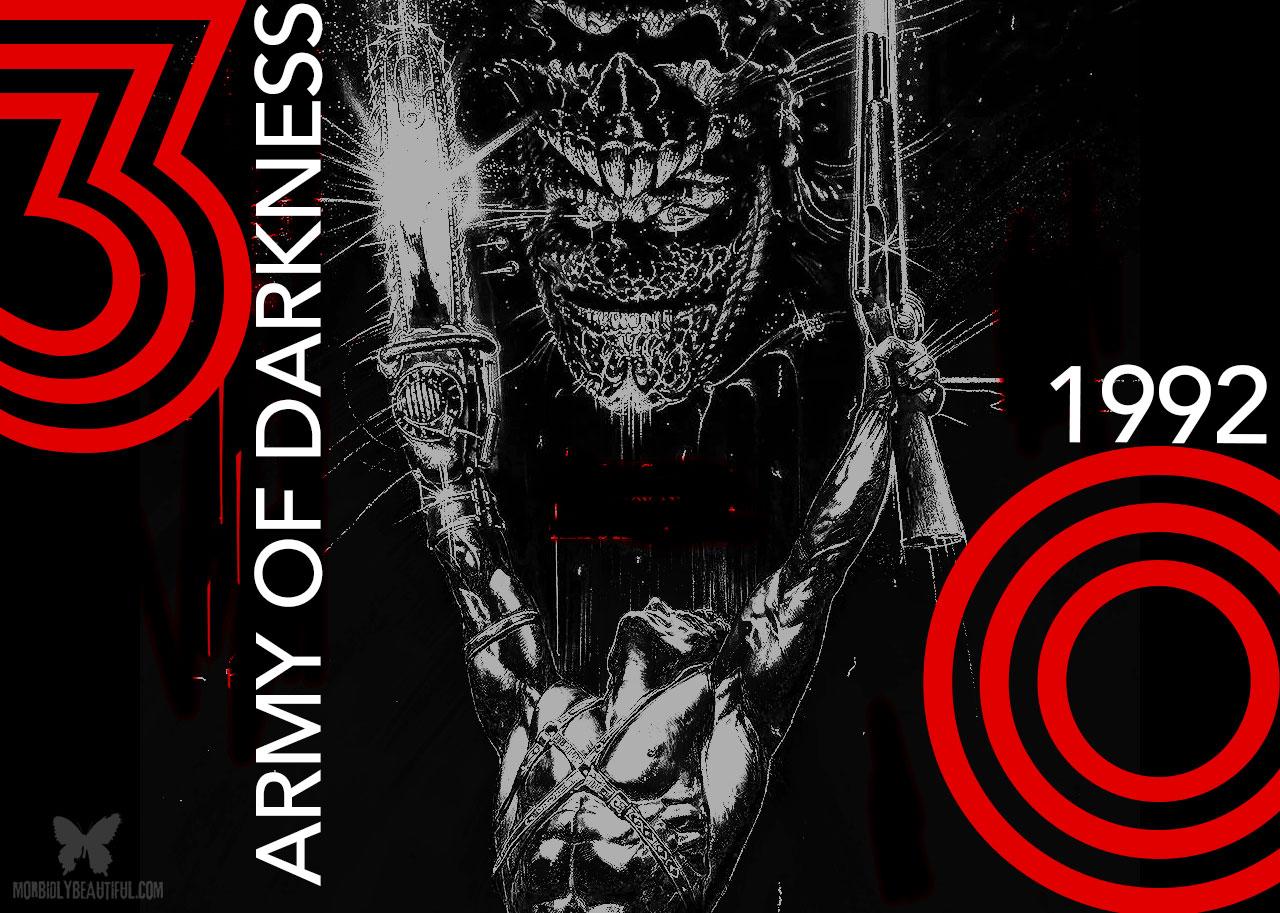
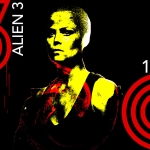
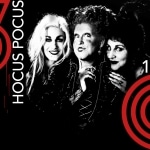

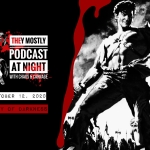




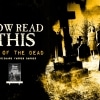



Follow Us!